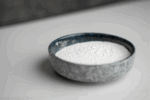Formulate for CrossFit: How to Disrupt the Endurance Category

There is no “GNC” for CrossFit. If endurance athletes go to Bodybuilding.com, they don’t see themselves. Targeting thousands of CrossFit boxes individually is incredibly expensive, and exhibiting at endurance races across the country is also prohibitively expensive. So, how do you target this large market without a physical retail partner? Formulate for CrossFit with direct-to-consumer (DTC) advertising.
Before we expand on DTC advertising, it’s valuable to review the past and future. Below are 11 opportunities that CrossFit/endurance market largely missed.
11 Past “Misses”
1. When the world started eating and supplementing with far more protein, endurance largely stuck with carbs.
2. While ingredient innovation has accelerated over the past decade, the endurance market is opting for new branding, new sizes, new flavors, non-GMO, non-allergenic, “green” (recycled), clean-label, natural, vegan, gluten-free.
3. When beta-Alanine became popular, the endurance market skipped it. Hey, I agree with you: I wouldn’t want that tingling sensation either while getting through my WOD.
4. When adaptogens caught fire, the endurance community largely stuck with carbs.
5. When nut butters exploded, the endurance community left those in the grocery store.
6. Knowing the link between high osmolality carbs and GI distress, the endurance community has mostly kept to the same carb sources despite longtime innovations in this category.
7. To avoid GI distress, we know we’re limited to roughly 100 calories at a time using classic carbs. Formulation innovation beyond 100 calories has largely been silent.
8. Knowing of the potentially damaging long-term effects of repeated insulin spikes from carbs, the endurance community has stuck with very similar carb-based formulas for decades.
9. When we all realized that Ancel Keys led us down a tragic low-fat path, we awoke to the value of fat for overall health, as well as athletic performance. But CrossFit and endurance formulas have largely remained the same.
10. When Dr. Jeff Volek debunked the myth that carbs are needed for endurance athletics, formulations stayed the same.
11. When some of the most successful global brands embraced “lifestyle” branding, CrossFit and endurance stuck with a product focus.
When you look at the CrossFit and endurance category, it’s dominated by carbs; namely maltodextrin, fructose and dextrose. The carbs are packaged in products with cool labels, and various formats including gels, dissolving tablets, add-to-water powders and gummies/chews. They add electrolytes, but it’s all basically the same stuff since the ‘80s.

Formulate for CrossFit: 4 Future Opportunities
1. Protein
This giant category is not relenting. Consumers are looking for large containers of basic whey isolate or concentrate with at least 20 grams of protein. Consumers who identify with you and your lifestyle want your protein, even if it’s a little more expensive than a bodybuilding protein. If the market wants vegan, that’s fine. Use our Smooth Protein™ for superior taste and texture. Contact us if you’d like a differentiating factor to add to the protein.
2. New functional ingredients
No, we don’t supply all of these below. But we want to partner with you to formulate for and disrupt the category. This is a partial list.
a. Carb10® – low glycemic and low osmolality prebiotic starch
b. Isomaltulose (Palatinose™) – low glycemic sugar
c. Cluster Dextrin™ – low osmolality carb
d. Allulose – zero glycemic sweetener
e. PeakO₂® – power and endurance ingredient, otherwise known as performance mushrooms
f. Sensoril™ and KSM-66™ Ashwagandha – adaptogenic energy and focus
g. Nut butters
h. goMCT® – healthy fat for clean, ketone fuel
i. MCT and coconut oils from Compound Solutions
j. TeaCrine®/caffeine combination – for improved time-to-exhaustion, and to lead the way in “Cognitive Sports Nutrition”
3. Formulate for CrossFit based on why muscles fail
a. Depletion of ATP and/or glycogen
b. Accumulation of hydrogen ions from lactate
c. Muscle contraction failure due to ATP-dependent calcium release/uptake
d. Oxidative stress (excess free radicals) causing muscle damage
ARE YOU A DISRUPTER? IF SO, WANT TO TALK WITH YOU.





